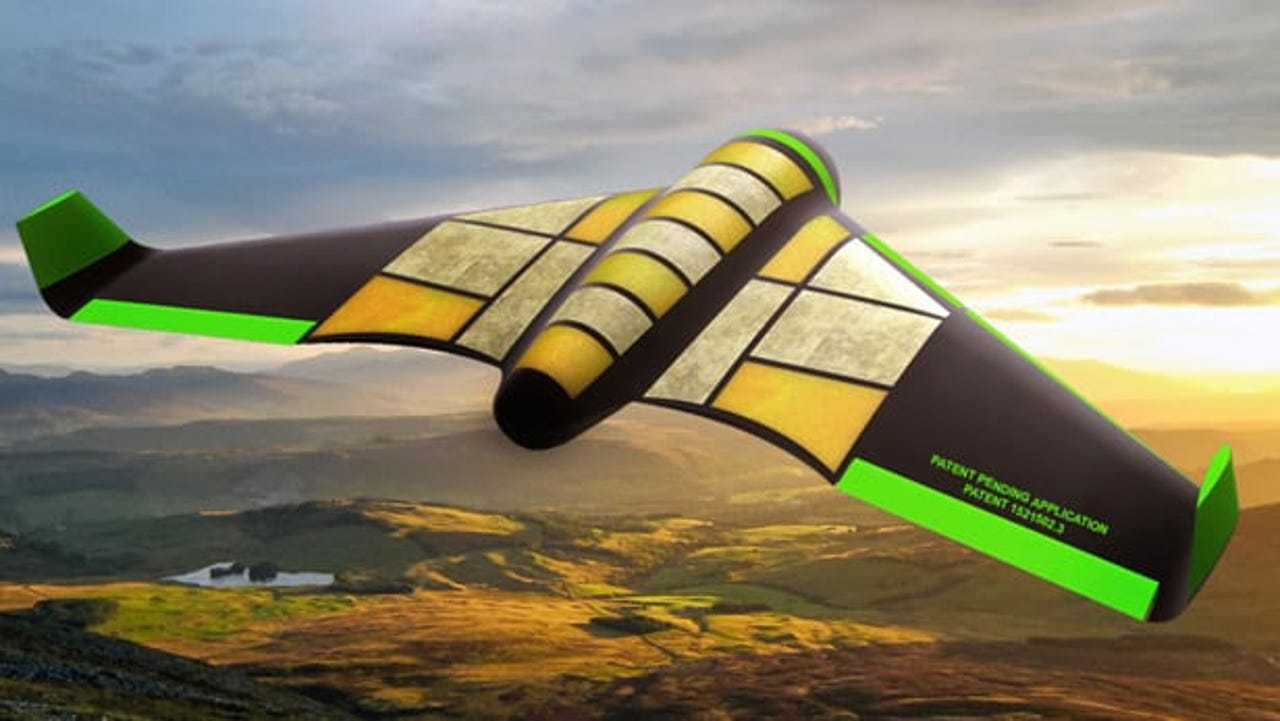The edible drone that aims to deliver food, not bombs


Pouncer creator Nigel Gifford: "When you think of the Nepal disaster... you can see how it might help."
Nigel Gifford began his working life in the British Army, where his duties included catering an expedition to climb Everest, before changing industries and getting into aeronautics. Previously Gifford was one of the team behind the unmanned Ascenta, a high altitude, long endurance platform that was acquired by Facebook in 2014.
His current plan is to launch Pouncer, a drone built to deliver aid rather than bombs.
How is the Pouncer development going?
It's going really well. The public support and goodwill, both for what it can do and the technology itself, has been wonderful.
Obviously, it can deliver food and medicines but the support for the lateral thinking in the technology has been great. The food technologists and food engineers see it as a really exceptional way to take food and use food for components that will actually work.
Nigel Gifford: "We have got it to the point where in the early part of next year we will be building some airframes."
What we don't know at the moment is if we will get any support to develop it from the government, but they are looking at that. In the New Year, we are looking at doing a crowdfunding exercise.
Some charities are asking for Pouncer already and they want to know when they can use it.
It is those areas that are cut off, isolated, where the primary shock has happened -- that's where Pouncer works so well.
How does the technology work?
We started with the idea of using an air launch out of the back of any aeroplane, such as a C-130 Hercules. In an air launch a small drogue shoot pulls them out in a string or in a package which opens up. A guidance system then takes them to their destination.
They glide fly from 10 or 20,000 feet into the area where they are needed. Now the first one will carry 50kilos (110.2lb). That 50 kilos will feed about 80 people for a day and a C-130 can take 90 of them (enough to feed 7,200 people for a day) and that is 4.8 metric tons.
You could fly down a valley, with villages either side of the valley that are all cut off, and you could get the supplies into those valleys and get the supplies into those villages.
Is there a method of guiding these deliveries?
Yes, they are pre-set. They fly to where you have set them. So you put in the co-ordinates of the destination and they will land within seven metres of that point.
Putting them, say, into a village in the hills of Nepal is no problem. When you think of the Nepal disaster, which I took as the paper problem for Pounce to solve, you can see how it might help.
Where there are areas that the aid agencies have had to leave, Pouncer would be able to go in and drop supplies.
You have prototypes of this?
We have got it to the point where in the early part of next year, we will be building some airframes. Then in the spring we will test those airframes. They may be tested here in the UK but they may be tested in Africa or they could be tested in Albania.
The reason is that we have already been told that we would be welcome in those areas rather than being caught up in miles of red tape in the western world.
The reason for this is because the way the Pouncer delivers its load is the same as, believe it or not, as you deliver a ballistic missile. Now that is a matter of working with the authorities to try and get exemptions. The regulations are there for a very good reason but that is the trouble with innovation. Innovation breaks the rules, and so it should.
Might it be easier in Africa or Albania than in the UK, where you have to deal with the regulations of the CAA?
To be fair, they are trying to help. There is nobody trying to not help. They get the point. We have a very good relationship with the CAA and have talked to their head of UAVs (Unmanned Aerial Vehicles) who couldn't have been more helpful.
But they still have their regulations to go through and, of course, we are not the only people who go to them. They have people coming to them every day with other requirements.
However, you are dealing with people and people, in the main, have a generous spirit towards helping other people, but they are working within a system. We are getting some goodwill but that doesn't mean that it won't take a long time.
It does frustrate me because we know that delivering this aid, delivering food to people in those areas, will save lives. Or at least delivering food that contains the right nourishment will save lives.
You are clearly getting stuck into this. Are you enjoying it?
I am 70 now and if I can have driven this to a point where it helps people who, as a result, will not starve, to help them get over the natural disasters, or the war zones, then I will have done something of value.
A lot of us don't get this opportunity to do something of value like this. All of my life's experiences have brought me to this point where I have the chance to do something good.